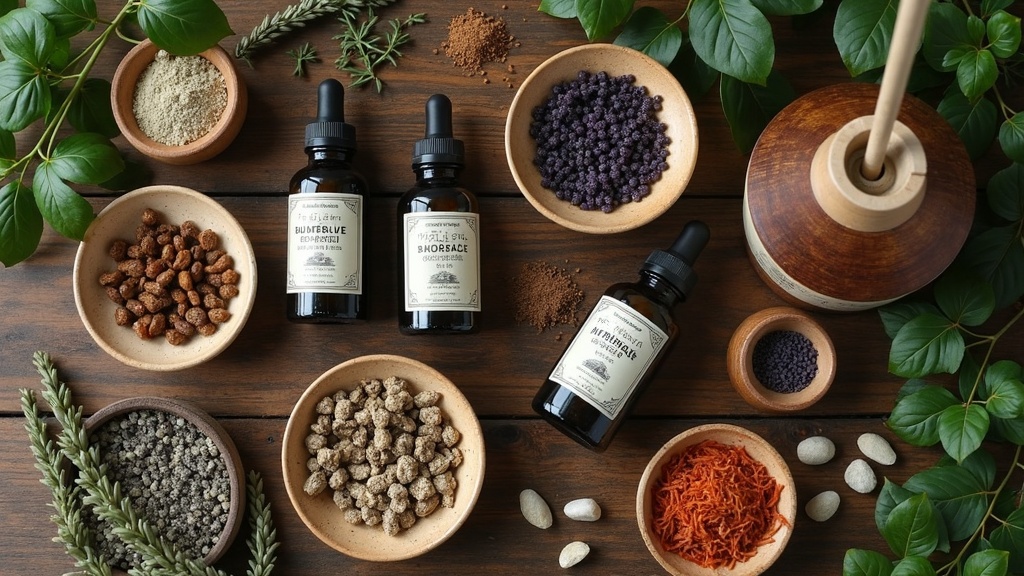Aromatherapy and wellness rituals have deep roots that travel back thousands of years. If you’ve ever used lavender to chill out after a long day or reached for peppermint oil to help focus, you’ve tapped into a tradition that goes way beyond modern spa trends. The history of essential oils in aromatherapy is full of ancient wisdom, clever techniques, and a seriously interesting mix of cultures. Here’s my guide to how essential oils found their way into daily routines and why they still matter to wellness seekers today.

The Origins of Essential Oils and Early Aromatherapy
The practice of using fragrant plant extracts for healing and ritual probably started close to the beginning of civilization. Ancient Egyptians are one of the earliest groups known for their love of aromatic plants. They used scented resins and oils in everything from religious ceremonies and medicine to beauty treatments and mummification. Frankincense, myrrh, cinnamon, and cedarwood regularly appeared in their recipes and rituals, as they believed these aromas connected them with the spiritual and brought protection.
Archaeologists have discovered ancient distillation equipment in places like Mesopotamia, where people experimented with extracting the “essence” of plants. Meanwhile, in India, Ayurvedic texts from thousands of years ago describe the use of aromatic oils for balance, healing, and spiritual practices. Chinese records point to aromatic herbs and resins used for both health and harmony in daily life. This early global use shows that no matter where people lived, the draw of beautiful smells and their mood-changing effects was universal.
The Spread of Essential Oils Through Ancient Cultures
The Greeks picked up on what Egyptians and Mesopotamians were doing and pushed the science further. Hippocrates, sometimes called the father of medicine, famously claimed “the way to health is to have an aromatic bath and scented massage every day.” He believed fragrances could boost health and keep illness at bay. Greek doctor Dioscorides catalogued hundreds of plants and their uses, guiding health practitioners for centuries.
The Romans, never ones to shy from luxury, loved infusing their famous baths with flowers and oils. Public bathhouses featured different rooms with clouds of fragrant steam, and wealthy citizens would finish off with a massage using a blend of herb-infused oils. Romans helped spread these ideas across Europe as their empire grew.
In the Middle East, Persian physician Avicenna invented a simple distillation process around 1000 AD. This made it easier to collect pure essential oils like rose. Avicenna’s processes boosted the popularity of fragrant oils in perfumery and medicine, with knowledge slowly making its way to Europe through trade and scholarship.
Essential Oils in Rituals, Religion, and Medicine
People in every part of the world have woven essential oils into their rituals and faith traditions. In Egypt, oils were part of sacred temple ceremonies and the careful wrapping of mummies to guide souls into the afterlife. In both Christianity and Judaism, frankincense and myrrh feature in sacred texts and rituals. Eastern spiritual traditions like Buddhism and Hinduism use aromatic incense and oils to help guide meditation or celebrate festivals.
The use went beyond just ceremony. Physicians and herbalists in places like China, India, Greece, and the Islamic world wrote long lists of how to use aromatics for everything from digestive woes to wound care. Blends were created for joint pain, sleep struggles, or boosting mood. People noticed that simple inhalation or massage could make a real difference in comfort and wellbeing.
The Medieval Period to the Modern Era
When plague and contagious illness hit medieval Europe, aromatic herbs and essential oils became especially prized. Doctors wore masks stuffed with rosemary, cloves, and other strong-smelling botanicals, hoping these would ward off disease. Aromatic plant blends were burned in homes and sick rooms, sometimes simply to cover unpleasant smells, but also as a type of folk protection.
Alchemists and apothecaries experimented with distillation, improving the extraction of potent plant oils. By the 16th and 17th centuries, essential oils found uses in tonics, perfumes, culinary flavoring, and even early medical remedies. Still, true scientific study of these oils had not really begun. Most use came from tradition, observation, and word of mouth.
The Birth of Modern Aromatherapy
The word “aromatherapy” didn’t show up until the 20th century. French chemist René-Maurice Gattefossé sparked fresh interest after an accident in his lab in 1910. He burned his hand and plunged it into a vat of lavender oil, noticing incredibly fast healing and little scarring. His curiosity kicked off a new era of studying essential oils for their potential benefits beyond just making things smell nice.
Later, French doctors and nurses, especially during World War II, began using lavender, thyme, and other oils for wound care, stress, and infection control. In the decades that followed, people like Marguerite Maury in Europe and Robert Tisserand in the UK wrote about blending oils for massage, beauty routines, and mood support. Wellness enthusiasts in North America soon followed, and aromatherapy started taking off in home routines and spas.
https://referral.doterra.me/4740777
How Essential Oils Are Used in Wellness Routines Today
Fast forward to today, and essential oils have carved themselves a spot on wellness store shelves, selfcare blogs, and in many homes. The uses are more varied than ever. People diffuse oils to relax, add lavender and eucalyptus to bath rituals, or apply gentle blends to sore muscles. Some even use essential oils in home cleaning or as natural air fresheners.
Modern research into essential oils is ongoing, but studies on lavender for relaxation, peppermint for alertness, and tea tree for its cleansing properties are widely referenced. What makes these oils so popular is how personal and flexible they can be. A few drops in a diffuser can mix up the mood of a whole room, while a scented massage can become a mini retreat from a stressful day. The versatility is part of the draw, with essential oils letting people customize their wellness routines in simple and effective ways.
Benefits and Things to Watch Out For
Essential oils attract fans for reasons like stress relief, energy boosts, mood lifting, and skin soothing effects. With that said, using them safely is really important. Not every oil fits every user, and some can be strong or cause reactions if not diluted. Gentle oils (like lavender) are often safest for home use, while spicy or citrus oils (like cinnamon or lemon) can irritate if applied directly. Quality matters too, so trusted brands and pure oils are worth checking out. Everyone’s body is different, so going slow with new oils is always a good idea.
It helps to remember that, while essential oils can step up a selfcare routine, they aren’t a cure for chronic conditions or substitutes for medical treatment. Always use them with care, and keep them away from sensitive areas like eyes or broken skin. Understanding your body’s reactions and starting with small amounts is the best step for wellness and safety.
“Here’s a little transparency: Our website contains affiliate links. This means if you click and make a purchase, we may receive a small commission. Don’t worry, there’s no extra cost to you. It’s a simple way you can support our mission to bring you quality content.”
Why Safety and Quality Matter
Getting pure, unadulterated oils is really important for anyone interested in true aromatherapy benefits. There have been concerns around synthetic additives or mislabeling in the essential oil industry, so reading labels and buying from reputable sources is pretty handy. Diluting oils in a carrier, such as almond or jojoba oil, makes topical use much safer. It’s always wise to check with a medical professional before using essential oils if you have allergies, health conditions, or are pregnant.
Popular Essential Oils and Their Historical Uses
- Lavender: Used for centuries in baths and linen closets, lavender’s calming effects and lovely scent make it a staple for relaxation and sleep rituals.
- Frankincense: Burned in temples and used in religious ceremonies, this resin-based oil was prized for its grounding aroma and role in meditation practices.
- Peppermint: Loved in both ancient Egypt and modern homes for spicing up mood and sharpening focus. Also used in early medicine for stomach complaints.
- Rosemary: Popular in Greek and Roman culture for boosting memory and purifying the air, still a favorite in home cleansing blends today.
Frequently Asked Questions
What exactly are essential oils?
Essential oils are highly concentrated plant extracts, usually made by steam distillation or cold pressing. They capture the natural aroma and beneficial compounds from herbs, flowers, citrus peels, or woods.
Are essential oils safe for everyone?
While many people use essential oils without trouble, some can be sensitive. It’s wise to patch test before trying a new oil and always dilute before applying to skin. Not all oils are safe for kids, pets, or during pregnancy, so do your homework.
How did aromatherapy get its name?
The term “aromatherapy” was first coined by French chemist René-Maurice Gattefossé in the early 1900s, after he studied the healing effects of lavender oil. It literally means therapy (healing) through aroma (smells).
Can essential oils help with stress?
Many people find diffusing calming oils like lavender or chamomile helps create a more peaceful atmosphere. While research is still growing, lots of users say it helps ease stress and make relaxation time more effective.
Key Takeaways for Essential Oils in Your Wellness Rituals
The tradition of using essential oils in aromatherapy stretches from ancient ceremonial rites to today’s home diffusers. Whether looking to relax, pump up your energy, or set the mood, people are still turning to nature’s scents just like their ancestors did. A little research, safe handling, and choosing quality oils go a long way in making aromatherapy work for you. With plenty of options and a long, fascinating history, these plant oils keep showing up in selfcare routines year after year. There’s always something new to learn and try, so take the time to find what works for you and mix up your wellness rituals with the next-level cool power of essential oils.
